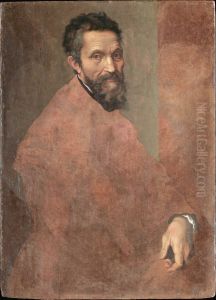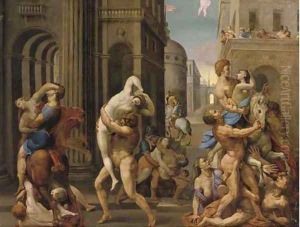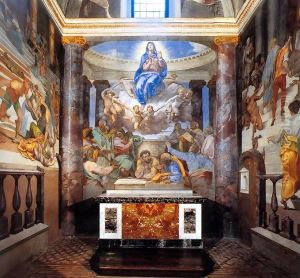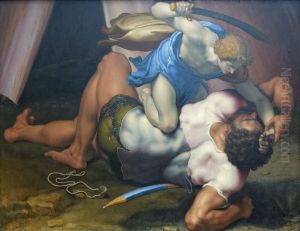Daniele da Volterra Paintings
Daniele da Volterra, born Daniele Ricciarelli in 1509 in Volterra, Tuscany, Italy, was a prominent Mannerist painter and sculptor. He is most famous for his association with Michelangelo and for the task of covering the nudity in the latter's 'The Last Judgment' fresco in the Sistine Chapel, which earned him the nickname 'Il Braghettone' (The Breeches Maker).
Daniele received his early training in painting in his native city of Volterra. He later moved to Rome, where he became deeply influenced by the works of Michelangelo. Daniele's style was characterized by dynamic composition, strong muscular figures, and a dramatic use of perspective. While in Rome, he produced a variety of works, including frescoes, altarpieces, and portraits. His most significant early work is the fresco series for the Orsini Chapel in the Trinità dei Monti, which he began in 1553 and is considered a masterpiece of Mannerist art.
In addition to painting, Daniele also worked as a sculptor. He was involved in the design of the Chapel of the Crucifix in St. Peter's Basilica and completed a number of sculptures in Rome. His sculptures, much like his paintings, reveal the influence of Michelangelo, with whom he maintained a close relationship until the latter's death in 1564.
Daniele da Volterra's legacy is somewhat overshadowed by his role in altering Michelangelo's 'The Last Judgment'. In 1564, after the Council of Trent had decreed that artworks should adhere to a standard of modesty, Daniele was commissioned by the Vatican to paint draperies over the nude figures. This act was widely criticized by later generations, although it should be noted that Daniele was acting under the orders of the Church and was likely trying to preserve Michelangelo's masterpiece from more radical alterations that others might have carried out.
Despite this controversial episode, Daniele da Volterra was a respected artist of his time, and his works still demonstrate the complexity and emotional intensity of the Mannerist style. His influence can be seen in the works of later artists, particularly in the Roman school. Daniele da Volterra died in 1566 and was buried in the church of Sant'Andrea della Valle in Rome.











